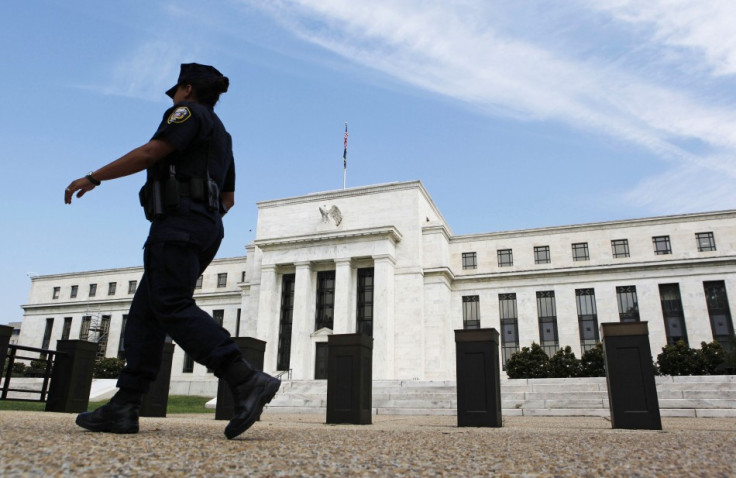Fed Reserve's Bond Purchases To Continue Till Mid-September

The US Federal Reserve remains determined to start trimming its $85bn bond-buying programme later this year but continues to remain tight-lipped about when the planned reduction will take place.
On Wednesday, the Fed's policy-making committee said nothing about how much longer it would continue with its bond-buying stimulus.
A Fed statement said the central bank will continue buying mortgage and treasury securities to further strengthen the US economy which it said was still challenged by federal austerity measures.
Earlier this month, Fed Chairman Ben Bernanke told the US Congress that there was no set deadline for the central bank's QE tapering.
In June, speaking at a press conference, Bernanke said the Fed could begin pruning its asset buys later this year if the US economy continues to improve, as officials expect it to, and could end its purchases by mid-2014.
There were three notable changes in the July statement. First, the Fed has slightly downgraded its view of the economic recovery, describing the pace of growth as "modest" - a change from the "moderate" pace seen in June.
It noted that mortgage rates had risen, suggesting that higher borrowing rates could run counter to the housing market's recovery.
It also highlighted the potential dangers of inflation running too low. The FOMC committee said it "recognises that inflation persistently below its 2% objective could pose risks to economic performance. Nonetheless, it expects inflation to move back toward its objective over the medium term.
The Fed "reaffirmed" on Wednesday its view that an "accommodative" monetary policy would be needed for a "considerable" period after bond-buying ends.
The Fed repeated it will hold the federal funds rate at zero to 0.25% for as long as the unemployment rate remains above 6.5%, provided the outlook for inflation between one and two years ahead is not projected to rise above 2.5%.
The Fed cut interest rates to almost zero in late 2008. Since then, it has more than tripled the size of its balance sheet to around $3.6 trillion through three massive rounds of bond-buying, designed to hold down longer-term borrowing costs.
Economists still expect the Fed to reduce its bond-buys after mid-September's FOMC meeting.
"We continue to expect the FOMC to taper the asset purchase program in September, provided that the next two employment reports are reasonably strong," Reuters quoted Dean Maki, the chief US economist at Barclays Capital, as saying.
The Fed's statement failed to boost Wall Street fortunes. The Dow finished 21.05 points lower at 15,499.54, while the S&P 500 ended 0.23 points lower at 1,685.72 on Wednesday. The Nasdaq closed 9.90 points higher at at 3,626.37.
Economic data shows that the world's leading economy is improving. The US economy expanded 1.7% in the second-quarter, beating expectations of a 1% expansion. The economy logged a 1.1% growth rate in the first quarter.
The jobless rate, which stood at 7.6% in June, is expected to drop down to 7.5% in July. Consumer prices have remained stable in the second quarter, with so-called 'core prices' rising 0.8% , well below the Fed's 2% target.
Several economists believe the US is ready for a cutback in monetary stimulus. However, critics say that this could lead to a detrimental knock-on effect for emerging markets.
A cutback in QE would raise bond yields in the US, which in turn would raise eurozone rates and suck out money from emerging markets.
A sudden withdrawal of foreign funds from emerging markets could also be catastrophic, as has happened before, during the Asian and Russian financial crisis of 1997 and 1998 respectively.
© Copyright IBTimes 2025. All rights reserved.






















